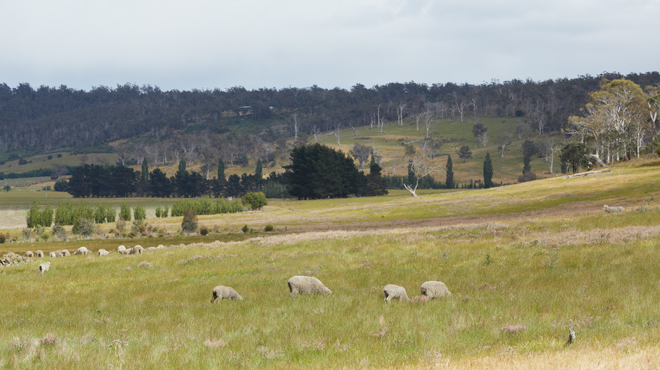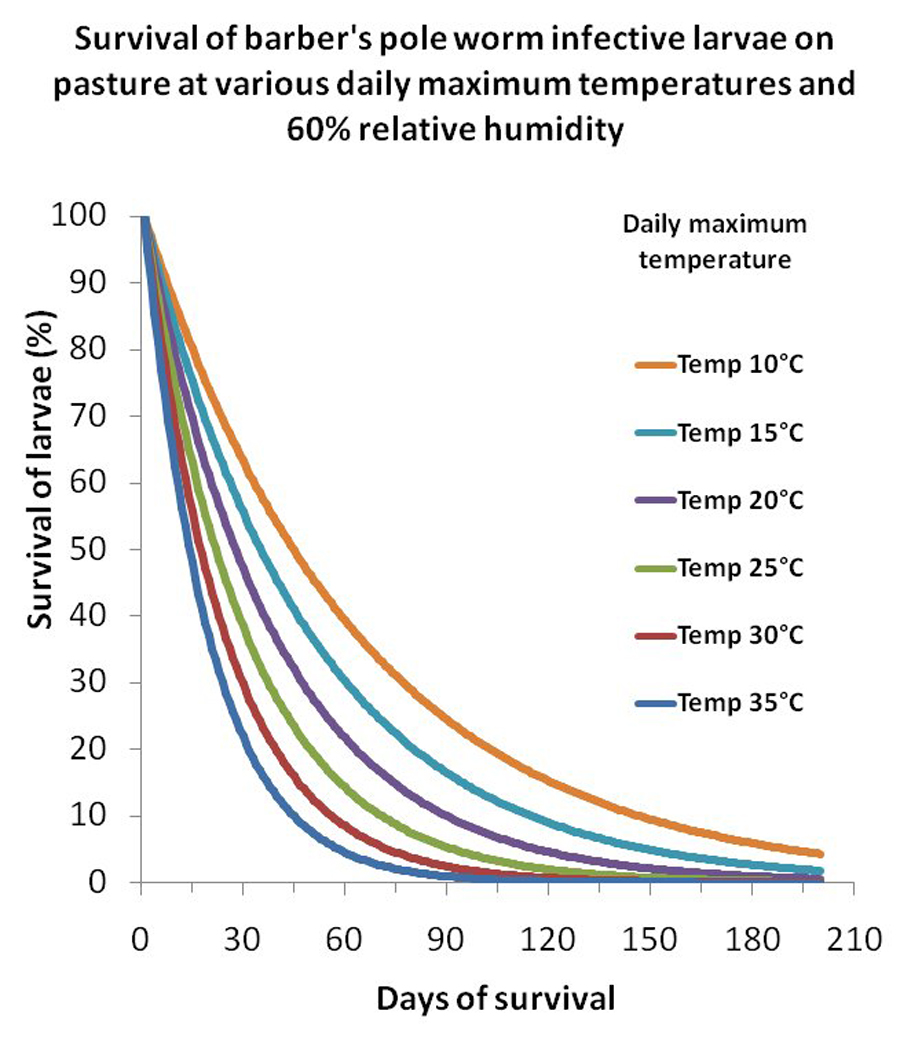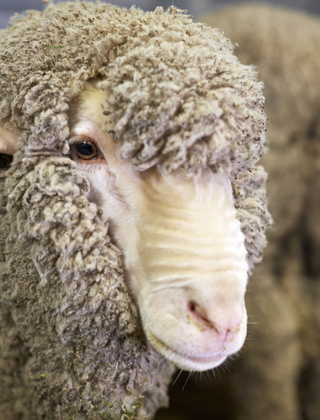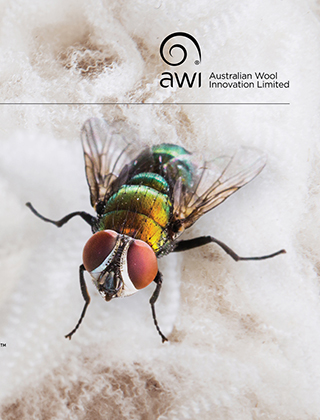Winter worm management

Winter has well and truly announced its presence in Australia's sheep regions, and the age-old issue of managing winter worms is no less stressful than usual, despite ongoing dry and drought across much of the production zone. While cooler temperatures can reduce worm activity in some species, it doesn’t eliminate the threat, and active management of your sheep to minimise the impact of worms is key.
Authors: Emily King, AWI National Extension Manager & Megan Rogers, AWI Extension NSW Project Manager
The winter worm threat
Effective winter worm management maintains sheep health and productivity, and farm profitability.
Worms, especially species like black scour worm and brown stomach worm, significantly impact sheep during winter. These parasites thrive in moist, cooler conditions, and while cold weather slows their development, it also increases the length of larvae survival on pasture.
Whilst we traditionally think of barber’s pole worm as a ‘summer worm’, significant barber’s pole activity and high worm egg counts (WEC) are continuing to be reported in the past few weeks across Australia. This isn’t necessarily surprising given the late start to winter and flooding in some regions but does present an extra challenge to manage.

Image source: WormBoss Preparing low worm-risk paddocks for sheep
Sheep infected with worms exhibit signs such as weight loss, poor wool growth, scouring, and in severe cases, anaemia or death. The cost of worm infections can be substantial, with losses in growth, wool, and survival, along with treatment expenses.
Monitor your sheep’s worm egg counts
Regular monitoring through WormTests is crucial. These tests help determine when sheep exceed the worm egg count (WEC) threshold, indicating the need for treatment.
Active monitoring also guides decisions on when not to drench, preventing unnecessary chemical use and reducing the risk of drench resistance.
Regular testing ensures timely interventions and more informed management decisions.
Breed for worm resistance
With the main ram selling season almost upon us, it’s important to think about the traits that are important on your place.
Investing in genetics pays long-term dividends. Incorporating worm resistance into your breeding program can significantly reduce worm burdens by improving your sheep’s natural resistance to worms. Additionally, selecting for low dag scores can reduce scouring, a common symptom of worm infections.
Select rams and ewes with lower Worm Egg Count (WEC) and Dag (DAG) Australian Sheep Breeding Values (ASBVs) where available.
Over time, selecting sheep which perform better for these traits means a flock better equipped to handle worm challenges, reduced reliance on chemicals and improved overall, long-term flock health.
Implement the ‘smart grazing’ method
Grazing management is a cornerstone of effective worm control and the ‘smart grazing’ method is one you can use. Smart grazing strategies include:
- Rotate grazing species: Alternate between sheep and cattle (if possible) on paddocks to disrupt worm life cycles.
- Rest periods: Allow pastures to rest between grazing to reduce larval contamination.
- Utilise unfavourable periods: Take advantage of weather that reduces worm larvae survival on pasture.
These practices help lower worm burdens and improve pasture health, leading to better overall flock performance.
Prepare low worm-risk paddocks
Creating low worm-risk paddocks involves:
- Strategic grazing: Implement grazing management practices that reduce worm contamination.
- Pasture management: Maintain healthy pastures that can withstand grazing pressure and reduce worm survival.
- Monitoring: Regularly assess paddock conditions and worm burdens to adjust management practices as needed.
By preparing low-risk paddocks, you can provide safe grazing areas for your sheep, reducing the likelihood of worm infestations.
Top tips and tricks for effective drenching
- WormTest: If you’re not regularly conducting worm egg counts (WECs), do yourself and your sheep a favour and start doing them today! It’s a cost-effective way of staying ahead of the game with worms and avoid things getting out of control. Access the list of ParaBoss WEC QA approved labs here.
- Use an effective product (effective means the drench kills 95% or more of the worms) that contains at least two active ingredients and use it at the correct dose rate. Drench to the heaviest in the mob, and if there is a large variation in weight, split the mob into heavy and light to avoid over or underdosing.
- Follow up drenching with another WEC in 10–14 days to check that the product/treatment has been effective.
- Continue to monitor your mobs for increases in WEC and treat as mobs reach thresholds. Careful and attentive monitoring can prevent avoidable adverse events and keep your stock thriving.
- Know the relative susceptibility of the different classes of livestock on your farm and the types of worms you normally see (a larval culture will determine this). At lambing and during lactation, a ewe’s immunity to worms temporarily declines. It is also important to minimise worm infections of your lambs as they have little immunity to parasites and worms affect lambs’ growth and even survival rates.
Minimise drench frequency and improve effectiveness and reduce drench resistance
Drenching remains a vital tool in the worm control toolkit for many, but it must be used judiciously:
- Limit drench use: Only drench when necessary and based on WEC results to preserve the effectiveness of current treatments.
- Combination drenches: Use drenches using multiple, effective (on your farm) active ingredients to target a broad spectrum of worms and reduce the onset of drench resistance by reducing the pressure on individual actives.
- Rotating between single actives is not enough: Rotating between drenches containing a single active (or combination drenches which contain actives that are all ineffective actives for your property) will increase drench resistance in your sheep. Effective, combination drenches are the gold standard for delaying drench resistance.
- Avoid overuse of long-acting products: Reserve long-acting drenches for high-risk periods, or remove them from your program where possible, to delay the onset and severity of drench resistance.
- Effective primer and tail cutter drenches: Must be used every time you use a long-acting drench product to avoid putting unnecessary pressure on the active chemicals.
- Quarantine drenching: New sheep should undergo quarantine drenching with at least four active ingredients, including monepantel or derquantel (the newest actives in the Australian market), to manage potential resistance.
- Conduct drench resistance tests: Perform DrenchTest and DrenchCheck every three to five years to assess the effectiveness of your drenching program.
Regular WEC testing and the use of effective, combination drenches, improves the worm control you achieve, prolongs the efficacy of available chemicals, and extends the long-term viability of your worm control strategies.
Monitor and adjust your strategy
Worm management is not a set-and-forget process. Regularly monitor your flock's health, WEC levels, and the effectiveness of your strategies. Be prepared to adjust your approach based on seasonal conditions, worm burdens, and the performance of your sheep. Flexibility and responsiveness are key to successful worm management.
By breeding for resistance, using strategic grazing practices, preparing low-risk paddocks, monitoring worm burdens, drenching only when needed and only with effective, combination drenches, and regularly reviewing and adjusting your management strategies to suit the weather and risks, you can protect your sheep and your bottom line.
More information
- AWI Extension NSW webinar – May 2025: Drench resistance and winter worm management
- AWI Extension NSW article: How do combination drenches slow the onset of resistance?
- Making More From Sheep Fact Sheet: Worms
- Making More From Sheep Tool 11.8 Management of worms
- Making More From Sheep Tool 11.9 Management of drench resistance
- WormBoss Signs of worms
- WormBoss Roundworms
- WormBoss Roundworm life cycle
- WormBoss Breeding for worm resistance
- WormBoss Worms on pastures
- WormBoss Grazing management
- WormBoss Preparing low worm-risk paddocks
- WormBoss Combination drenches – benefits and efficacy














